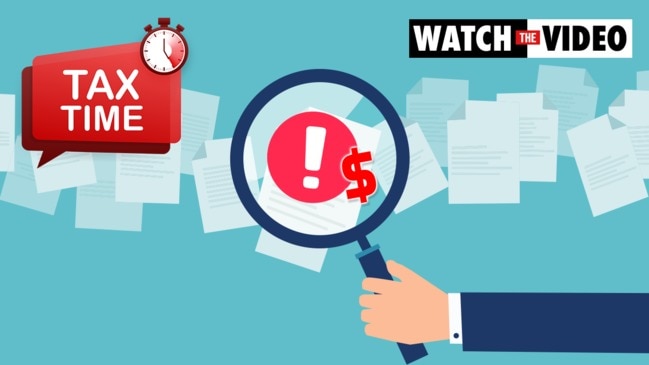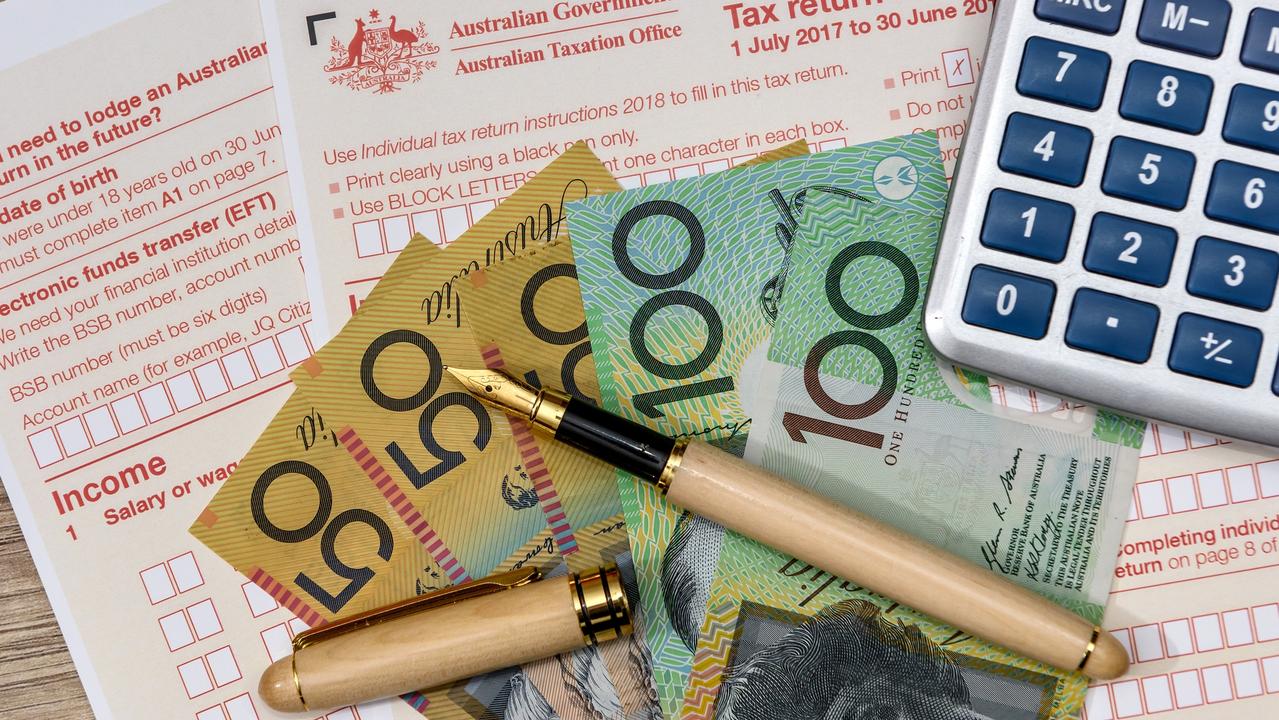How to claim your ‘work from home’ expenses in this year’s tax return
Working from home has been great for some but claiming your expenses can be confusing. Here’s one pitfall you should avoid.

Many Australians have set up home offices amid the Covid-19 pandemic but what is the best way to claim back these expenses?
Tax expert Adrian Raftery, principal of Mr Taxman, said there were several methods that could be used and it could make a big difference to how much you get back in your tax return.
And he also warns that buying expensive new equipment during end-of-financial-year sales may not be as financially savvy as you think as there is a major pitfall to doing this so close to the June 30.
The most simple method
For those who really don’t want to muck around and don’t mind if they don’t get the maximum amount tax refund back, the simplest method is called the “short cut method”.
This was introduced during the pandemic to make it easier for people to claim a refund and has been extended for a further year.
It allows people to claim 80 cents for every hour they work from home. So all you need to do is work out how many hours you worked from home and then multiply this by 80c.
However, every home office expense is deemed to be covered by this, so you can’t claim any more money back for things like internet charges or buying a new desk or other equipment.
Mr Raftery believes most people should avoid this method as they will be able to get more money back using other methods.
RELATED: Aussies who will get ‘bumper’ tax refund this year

For example, using the short cut method, someone who works 37.5 hours a week at home, for 48 weeks, would be able to claim $1440 as a tax deduction.
“This looks like a sizeable deduction but if you calculate your home office running costs (for example, internet, mobile phone, computers, desk, chairs and stationery), I would expect this to add up to around $2500,” he told news.com.au.
“So you are leaving money on the table by using the shortcut method.”
If you want more money back
The other options are using the “actual cost” or “fixed cost” methods. The only difference between these two is that the cost of electricity is set at 52 cents per hour for the “fixed cost” method, while the “actual cost” approach requires you to calculate this using your power bills.
Mr Raftery prefers the “fixed cost” method because of its ease in working out the electricity costs.
When it comes to claiming other expenses, both methods work in the same way, and it’s more complicated if equipment costs over $300.
Mr Raftery said it was possible to claim any work-related office equipment such as keyboards, desk, chair or wireless mouse.
Interestingly, specialist photography equipment stores like Hypop have also reported more people buying better lighting setups and microphones for their homes so they look and sound better during Zoom calls.
Mr Raftery said these were also legitimate deductions.
“However, if you are buying all this for your daughter’s netball team meeting, unfortunately you can’t claim it,” he said.
“Any expense has to be incurred while producing assessable income.”
You can also claim running costs such as internet, phone and electricity but not occupancy costs such as mortgage or rent payments, or home insurance.
If buy things like stationery or an office chair that costs less than $300, you can claim the full amount in this year’s tax return.
RELATED: ATO reveals what expenses it will target this year

Once you spend over $300 you have to work out depreciation based on the equipment’s “effective life”. Mr Raftery said the Australian Taxation Office provides a guide of how long they expect people to be able to use a piece of equipment in its latest Taxation Ruling 2020/3.
For example, electronics are considered to last for three years. So if you buy a computer for $1000 then you need to divide this amount by three years ($333).
If you haven’t owned the computer for a full year then you must only claim for the amount of time since you bought it. So the deduction would come down to $167 if you bought the computer six months before.
Next year, you are able to claim the full $333, and the year after that another $333. Then you will claim the remaining $167 in the final year. It’s your responsibility to remember to claim the amounts each year.
If the computer is not only used for work then you also have to reduce the amount by the proportion of time of personal use.
Timing can be everything
It’s worth keeping in mind that if you’re planning to buy equipment worth more than $300 during the end-of-financial-year sales that you won’t be able to claim much of it in this year’s tax return.
For example if you buy something on June 30 then you will only be able to claim one day’s worth of depreciation in this year’s tax return.
“If you spend $1000 on a computer on June 30, you may only get to claim back about $1 for one day’s worth of depreciation (in 2020/21),” Mr Raftery said.
You will have wait until next financial year to claim another full year’s worth of depreciation.
Despite the lure of end-of-financial-year sales, it’s actually better to buy an expensive piece of equipment at the beginning of the year so you can claim the entire year’s worth of use, rather than a few weeks or days.
“Obviously smart retailers will be trying to sell things for $299 or less,” Mr Raftery said.
RELATED: Income tax calculator reveals how much you’ll get back

Other pitfalls to avoid
You need to have a receipt for every expense and remember that if something is also bought for personal use, you should only claim part of the expense back.
“The ATO is looking at home office expenses as a potential audit area this year,” Mr Raftery said.
“So if you are a factory worker and you want to try and claim $2500 of home office expenses, maybe rethink it.”
Also keep in mind that when you claim something on tax, this does not mean you get the entire amount back in a tax refund.
“When you see things advertised as 100 per cent deductible, some people think they get the whole amount back on tax if they spend $1000,” he said.
“They are probably tricked by marketing into believing they get all their money back.”
People need to keep in mind the money they get back will be the amount they would have paid in tax.
For someone paying around 40 per cent tax, then claiming back $1 on your tax return, will save you 40 cents this year.
“That’s where people have been disappointed in the past, they spend $1000 and get 40 cents back,” Mr Raftery said.
“Most people only think about tax at this time of the year and savvy retailers know and understand this.”
charis.chang@news.com.au | @charischang2




